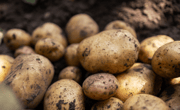SDC Rewards Member
Upgrade yours now
Sex And Power In The Animal Kingdom: Seven Animals That Will Make You Reconsider What You Think You Know
It’s easy to assume all animals have a neat dividing line between the sexes because the differences in appearance between males and females can be so striking. But the more scientists learn about wildlife, the clearer it is that nature doesn’t have a rule book.
Most people know that male seahorses become pregnant and give birth. Yet research is revealing more about animals that defy expectations when it comes to sex norms.
To understand why some species evolved special traits or appearances you need to know why the males and females of many species evolved to look so different to one another. Throughout most of the animal kingdom, females have a finite number of eggs, whereas males have an infinite number of sperm.
This is known as anisogamy and usually causes males to compete for females through the evolution of weapons such as antlers in deer, or adornments such as the beautiful tail of the peacock. Consequently, it is in the interest of females to be more picky about their mating partners.
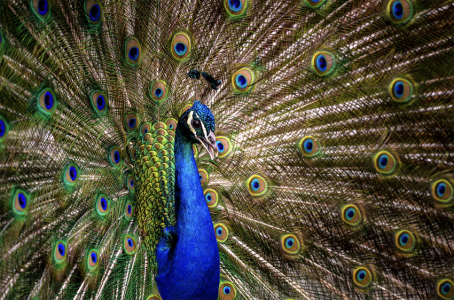
Male peacocks are hard to ignore. Andrey Bocharov/Shutterstock
These differences in appearance of the sexes evolved through a process called sexual selection.
1. The mallard
A good example of this is the mallard, one of the most common ducks in the world. The brown colour of the females’ feathers evolved through natural selection where the fittest survive; in this case, the ones that are camouflaged from predators.
The bright blue and green feathers of the male mallards make them conspicuous against their background, but it also increases their attractiveness. The females choose the “sexiest” males based on their plumage. So, for the majority of species, males are brightly coloured and females have a sombre appearance.

Male and female mallard ducks look very different. Sergey Muhlynin/Shutterstock
But this isn’t always the case. Evolution has created some incredible twists in nature’s story.
2. The white-necked jacobin
A recent study found that around 20% of female white-necked jacobin (a hummingbird species from central America) have iridescent blue and green plumage that mimics the colour of males.
Although the females only imitate the males in appearance rather than behaviour, they gain the advantage enjoyed by the more aggressive males. Males avoid females with ornamental plumage, meaning they are left alone to enjoy better access to food.
3. The narwhal
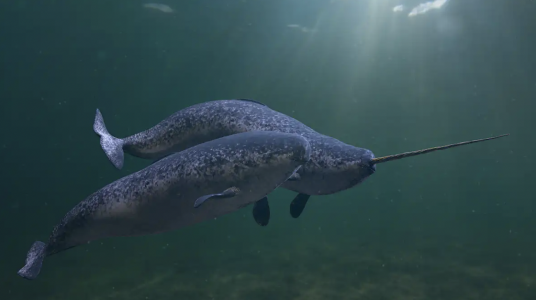
Narwhal couple swimming together in the ocean (3d rendering) Dotted Yeti/Shutterstock
The narwhal, or unicorn of the sea, is an Arctic whale that has a long spiral tusk, up to three metres in length. The males use the tusk to attract femalesand warn off male rivals. The male with the largest tusk is the most dominant and has the most mating opportunities.
However, a small proportion of females have tusks. It is not known why. But if tusks increase the chances of survival (through fighting off predators or spearing food), it would have evolved via natural selection in both male and female narwhals. Since the presence of a tusk is largely restricted to the males, it is possible the tusked females benefit in a similar way to the hummingbirds.
4. The barred buttonquail
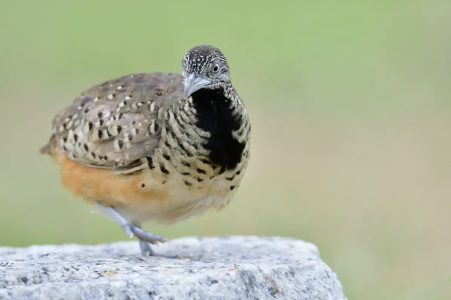
Female buttonquails have more distinctive markings. Super Prin/Shutterstock
Some species, such as the barred buttonquail (a south Asian ground bird) show a complete role reversal. Females are larger than males and have a black throat and breast patch that the males lack. The females make a loud booming call to attract males and fight for access to mates.
Once a pair have mated, the female moves on to her next mate while the male is left to incubate the eggs and raise the chicks alone. However, this comes at a cost. In the animal kingdom, most females have a longer life expectancy than males, but female buttonquails have a lifespan of four years, almost half the lifespan of males.
5. The ruff
It is not just the females who benefit from adopting male appearances or traits. The ruff (a wading bird from northern Europe and Asia) was named after the collar of feathers that develop around the neck of the males during the breeding season, similar to Elizabethan ruffs that were worn in the 17th century. Males with more impressive ruffs attract more females.
So, the best-ruffed males are spoilt for choice, whereas some males end up as lonely hearts with no opportunities to mate at all. But, these disgruntled males have found a way to beat the players at their own game. Some males copy females during the breeding season, so they can get close enough to the females to do some sneaky mating.
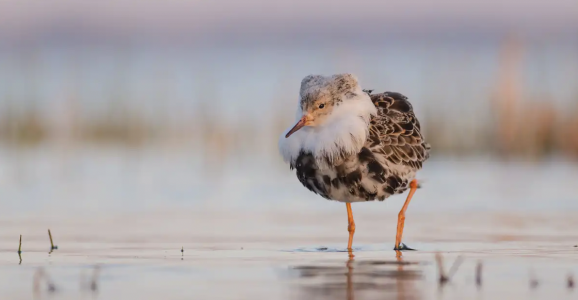
Ruff size is very important to these birds. Simonas Minkevicius/Shutterstock
Some of the ruffs that impersonate females will even will lure other malesaway from the females. The pseudo females will then go back to mate once the coast is clear.
6. Hyenas
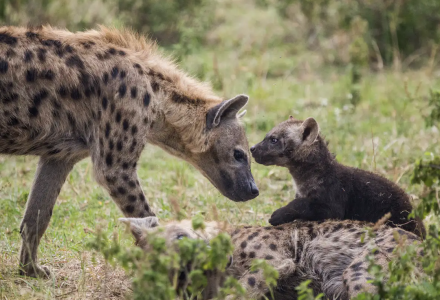
Hyenas live in a matriarchy. Lua Carlos Martins/Shutterstock
Perhaps the most fascinating animal is the spotted hyena of sub-saharan Africa, where the females dominate the clans. They do the majority of the hunting and raise the cubs alone. The females are larger than the males and have more testosterone, meaning that often the highest-ranking male is subordinate to the lowest-ranking female.
The females even have a penis, complete with scrotum and testes, capable of erections. This is actually a pseudopenis, formed by an enlarged clitoris through which females urinate and give birth. The fake penis is used to signal dominance when hyenas meet each other, with an erect “penis” acting as a flag of submission.
So, in the animal kingdom, there are many benefits to looking like a member of the opposite sex. Some fish species such as the Asian sheepshead wrasse take this one step further and change sex during their lifetime.
Known as sequential hermaphroditism, the largest females turn into males. A change in hormone levels make their ovaries transform into testes, allowing them to produce more offspring over their lifetime. We have learnt so much about the animal kingdom since the onset of modern science, but as these new studies show, we may only have scratched the surface.
This article was first published on The Conversation, and was written by Louis Gentle, Principal Lecturer in Wildlife Conservation, Nottingham Trent University





